Authentic Tang Dynasty Clothing in Ancient Paintings | A Millennium’s Legacy
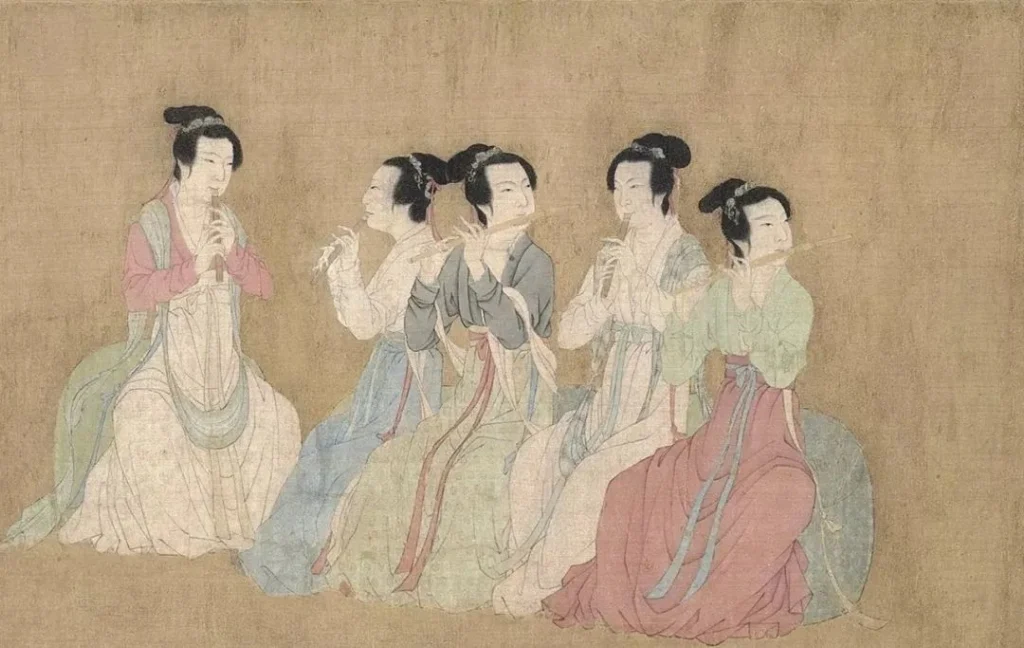
Tang Dynasty clothing is celebrated for its diversity and opulence, shaped by the dynasty’s cosmopolitan ethos. Unlike the restrained elegance of Song Dynasty attire or the dignified grandeur of Ming Dynasty hanfu, Tang clothing embraced extravagance. Women’s outfits, in particular, showcased bold designs, vibrant colors, and unconventional styles, as seen in shinu paintings—artworks depicting noble ladies in leisurely settings. These paintings serve as a window into the fashion and social norms of the era, revealing how clothing reflected status, beauty, and cultural exchange.
Tang Dynasty clothing, captured in ancient paintings, showcases the opulence of Hanfu. Want to explore this vibrant legacy? Discover more!
As the pinnacle of feudal society’s glory, the Tang dynasty saw the flourishing of palace and shinu (ladies) paintings. The detailed depictions of women’s clothing in shinu paintings reveal the aesthetic tastes of Tang ladies and the unconventional norms of women’s attire. Let us take these paintings as a guide to glimpse the graceful poise of Tang dynasty women.
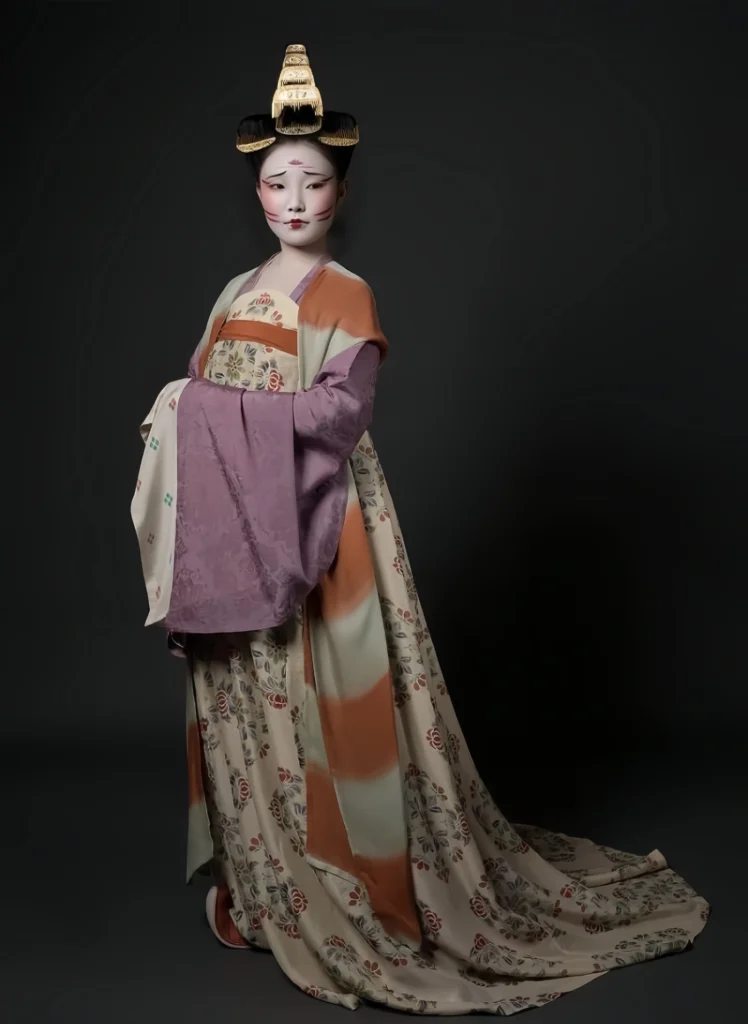
1. Sheer Elegance: The Daxiushaluoshan Style
The basic three-piece ensemble for Tang women consisted of qun (skirt), shan (top), and pi (shawl). As depicted in the Zanhua Shinu Tu (Painting of Ladies with Flower Hairpins), the ladies have cloud-like high buns, faint moth-like eyebrows, and wear zhu-colored moxiong (chest wraps) with floor-length skirts, draped with a misty sheer shan. This is the quintessential “daxiushaluoshan” (large-sleeved gauze shan) style. This style, crafted from gauze, features a bare-shoulder, half-exposed chest and a chest-high skirt, often worn without inner garments, adorned with brocade pibo (shawls) to highlight a woman’s regal bearing and voluptuous beauty. Such an open clothing style was unique to the Tang dynasty.
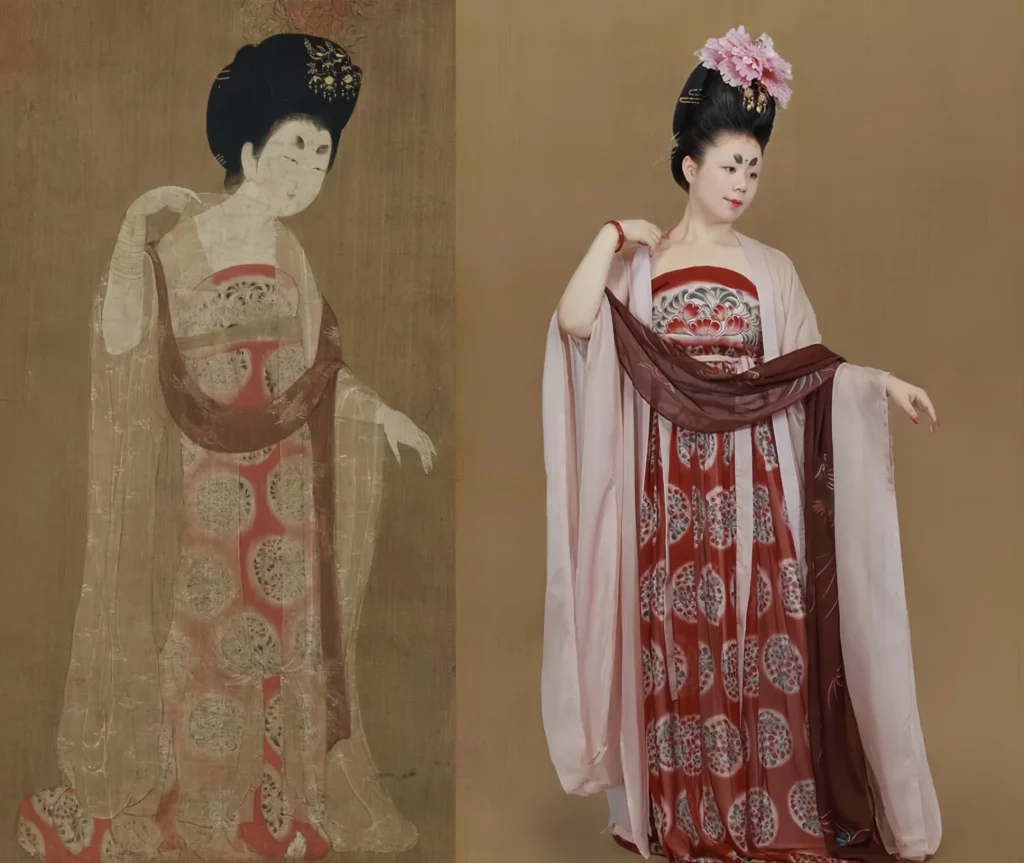
Though the Tang allowed great freedom in attire, ordinary commoner women were not permitted to half-expose their chests—only women of high status could wear such outfits. Of course, this exposure had limits; the women in shinu paintings were mostly noble ladies leisurely strolling in private gardens, not appearing on public streets.
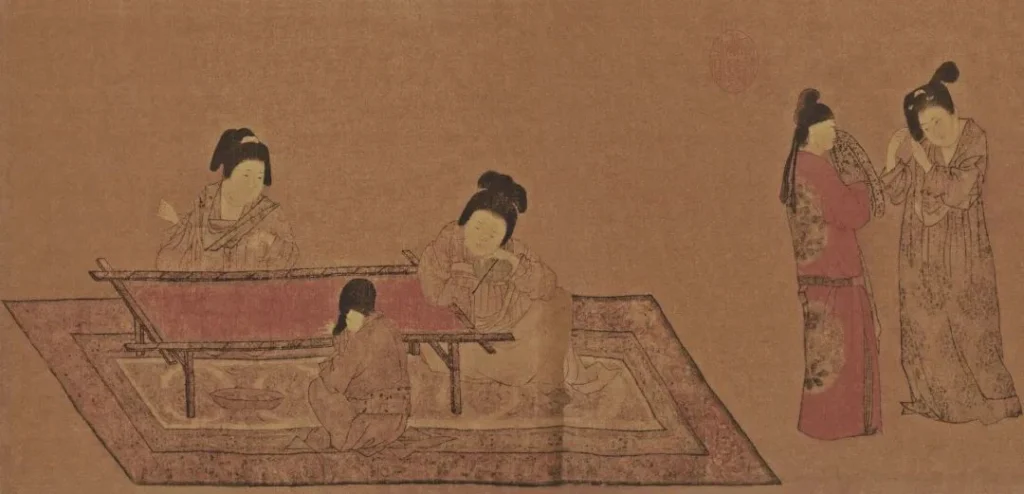
The phrase “loosely tying a silk skirt, half-revealing the chest” speaks to the boldness of Tang attire. While Tang women frequently bared their décolletage, this trend was largely confined to the High Tang period. The Han Xizai Yeyan Tu (Han Xizai’s Night Banquet Painting), depicting a Five Dynasties Southern Tang banquet, shows musicians with less voluptuous figures and more conservative, tightly covered clothing.

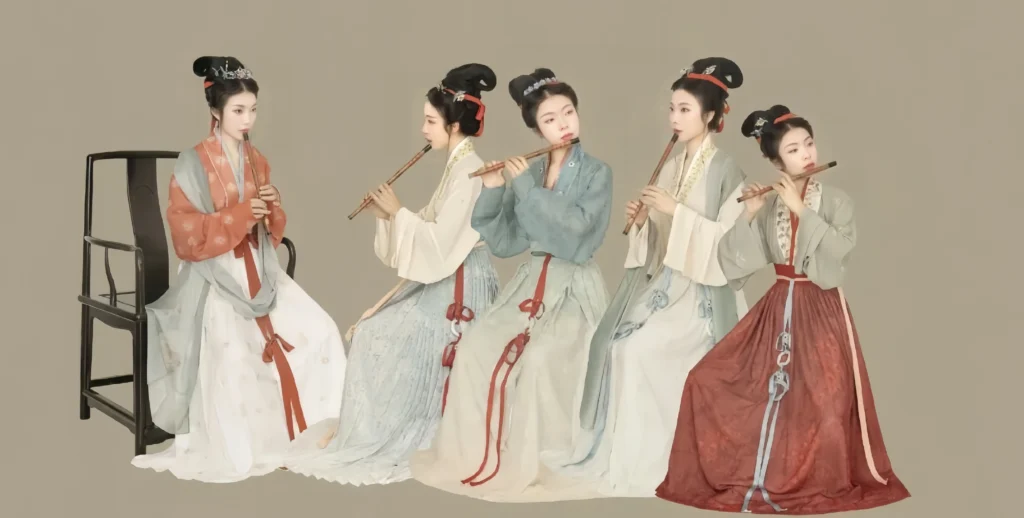
2. The Fiery Shiliu Qun: A Symbol of Beauty
If a man was smitten by a beauty’s charm, there was a saying: “falling at the feet of her shiliu qun.” Zhang Wei wrote in Zeng Zhao Shijun Meiren: “Red powder and green moth-like brows reflect Chu clouds, a peach-blossom beauty on horseback in a shiliu qun.” The “shiliu qun” often symbolized a beautiful woman. So, what is the origin of this shiliu qun that captivated countless poets and scholars?
Among Tang skirts, none were more beloved than the shiliu qun. From palace noblewomen to ordinary women, all adored this style. The shiliu qun was a red skirt, its color as fiery as pomegranate blossoms, unadorned with other hues, making the wearer strikingly captivating. Bai Juyi’s Pipa Xing describes: “Her jeweled comb snaps with the beat, her blood-red luo skirt stained with spilled wine,” where the “blood-red luo skirt” refers to this shiliu qun.

While the red skirt was stunning, it was monochromatic. Zhou Xibao’s History of Ancient Chinese Clothing, Chapter Seven, notes: “Tang skirts were prized for their many folds, and some were jianse qun.” Thus, jianse qun, featuring two or more alternating colors—typically red-green, red-yellow, or red-blue—offered vivid contrast and unique charm.
In Yan Liben’s Buanian Tu (Painting of the Palanquin), palace maids hold long fans and wear red-green jianse qun, vibrant and striking.
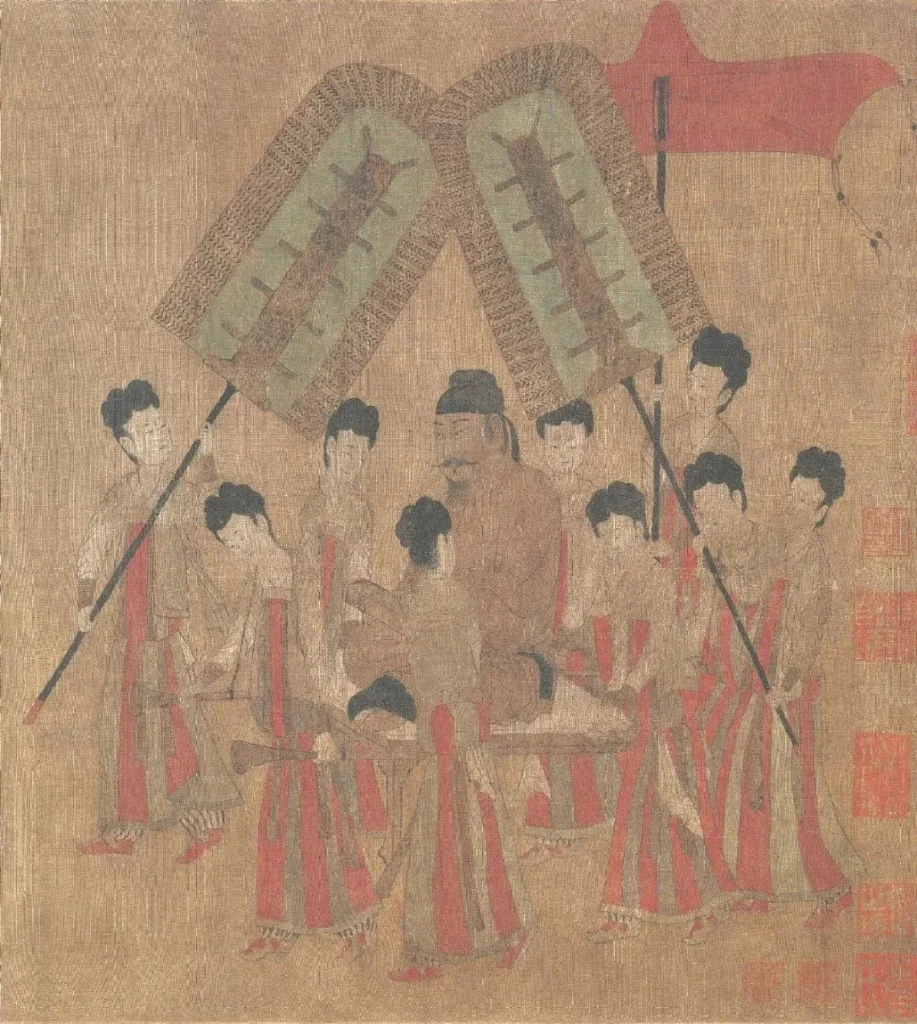
In terms of decoration, skirts featured gold inlay, silver embroidery, and pearl or gem embellishments. Bai Juyi wrote: “The skirt’s waistband pressed with silver threads,” with the waistband often made of kesi (tapestry weave), brocade, or embroidered fabric, adorned with silver cloud patterns, exquisitely ornate in every detail.
3.Women in Men’s Clothing
The Liji Neize stipulated that “men and women must not share clothing,” yet in the Tang dynasty’s fashionable trends, women could wear not only foreign hufu but also men’s attire. The Shaanxi History Museum displays a tricolor figurine of a female servant in men’s clothing, wearing an official hat and a man’s paofu, yet adorned with makeup, blending dashing charm with delicate allure.
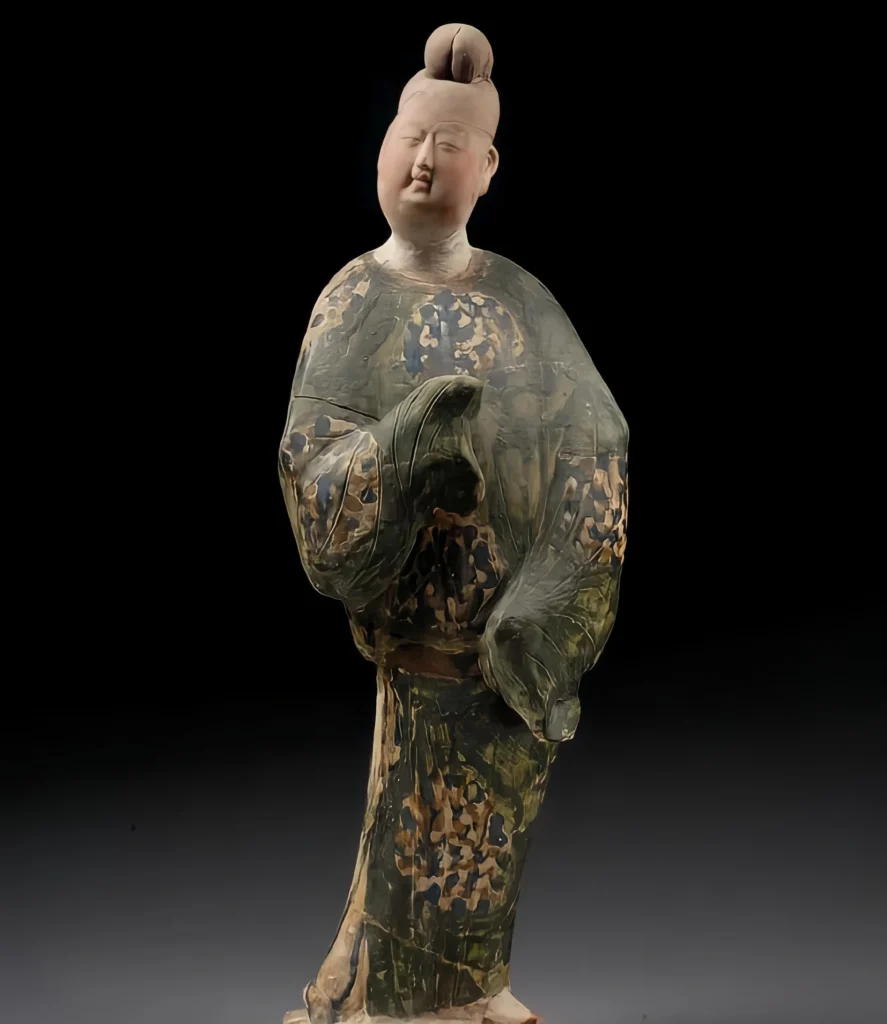
In Tang painter Zhang Xuan’s Guoguo Furen Youchun Tu (Lady Guoguo’s Spring Outing Painting), a maid wears a weimao (veiled hat), yuanling paoshan (round-collared robe), long pants, and boots. Scholars suggest that women wore men’s clothing for the convenience of social activities. Initially popular in the palace, this trend was later adopted by commoners and spread widely. In the context of a millennium of traditional feudal norms, this phenomenon was unique to the Tang dynasty, reflecting, to some extent, an elevation in women’s status.
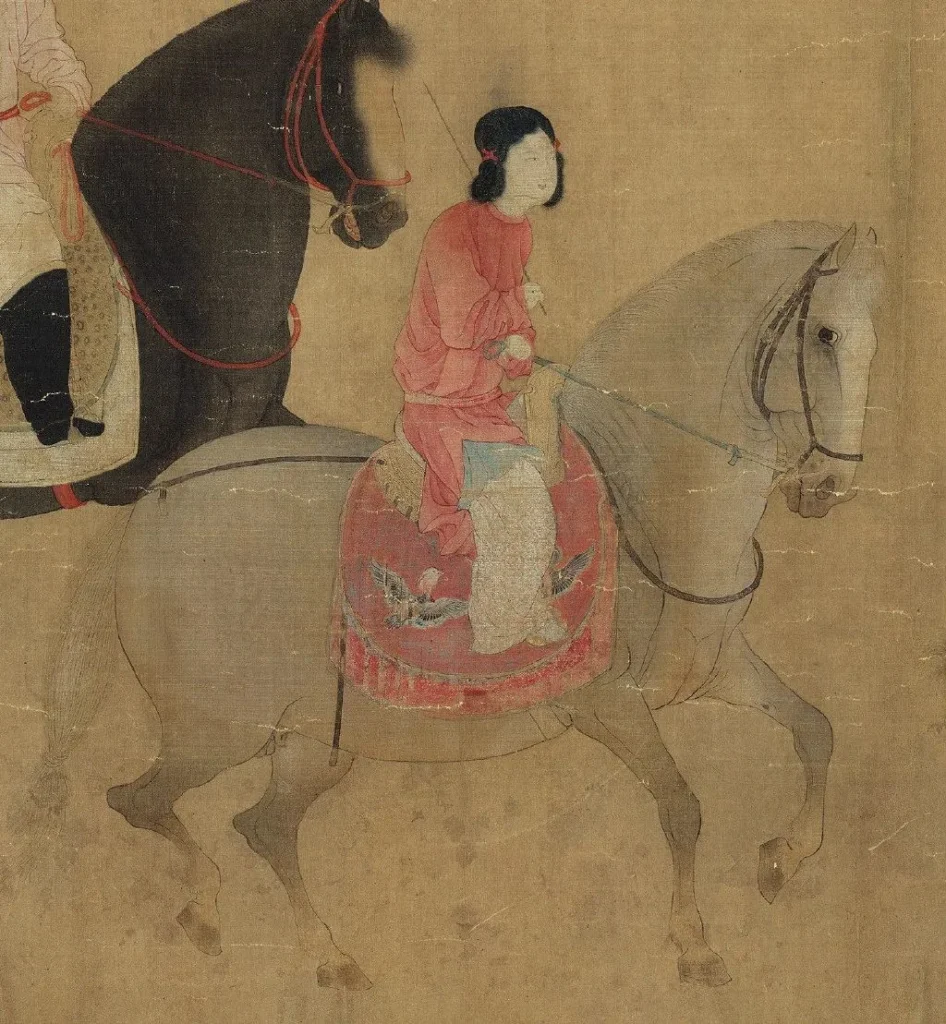
Overall, the grandeur of Tang culture, reflected in its clothing, showcased its inclusivity and magnanimity. Especially in the evolution of women’s attire, these styles were not only revered in their time but continue to amaze modern audiences, who marvel at the exquisite craftsmanship and distinctive Tang aesthetic of these garments.
4. Breaking Norms: Women in Men’s Clothing
The Tang Dynasty’s inclusivity extended to gender norms, with women occasionally donning men’s attire. Shinu paintings and artifacts, like the tricolor figurine at the Shaanxi History Museum, depict women in round-collared robes and official hats, blending masculine and feminine aesthetics. This trend, initially popular in the palace, reflected the era’s relaxed sartorial boundaries and elevated women’s social presence. Such versatility in Tang Dynasty clothing highlights the dynasty’s progressive spirit, a hallmark of its cultural legacy.
5. The Legacy of Tang Fashion in Modern Hanfu
The influence of Tang Dynasty clothing persists in today’s hanfu revival, where enthusiasts recreate styles like the shiliu qun and daxiushaluoshan. These garments, immortalized in shinu paintings, inspire designers to blend historical authenticity with modern flair. Events like the Luoyang Hanfu Festival in 2025 celebrate this legacy, drawing thousands to experience Tang-inspired fashion in the historic city of Luoyang.
If you want to learn more about Tang Dynasty Hanfu,: A Brief History of Tang Dynasty Clothing.

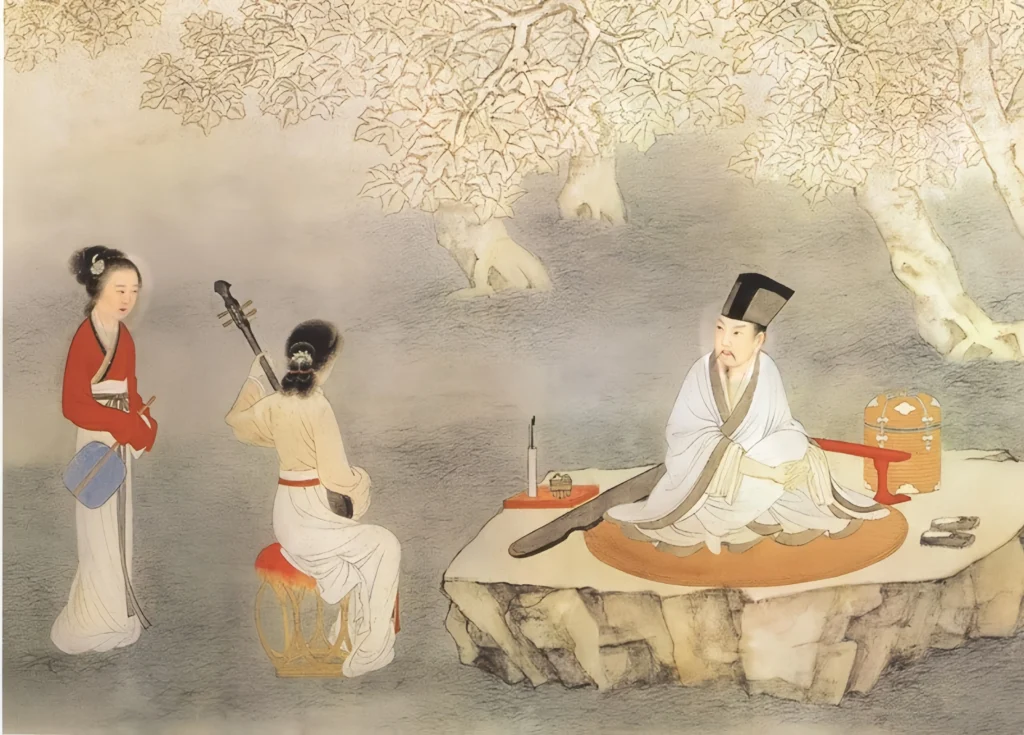
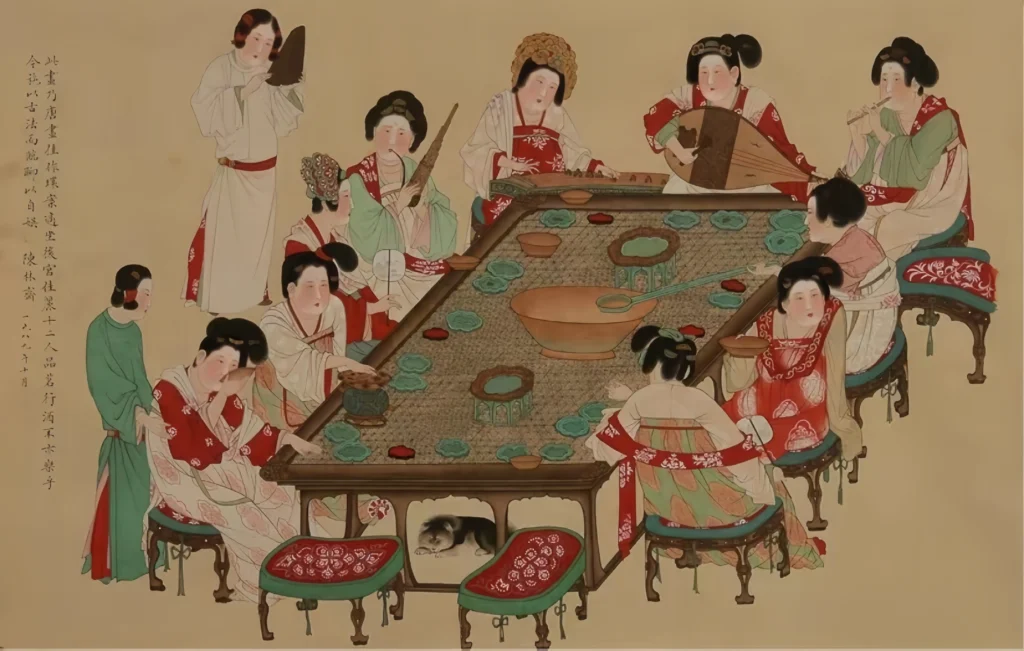
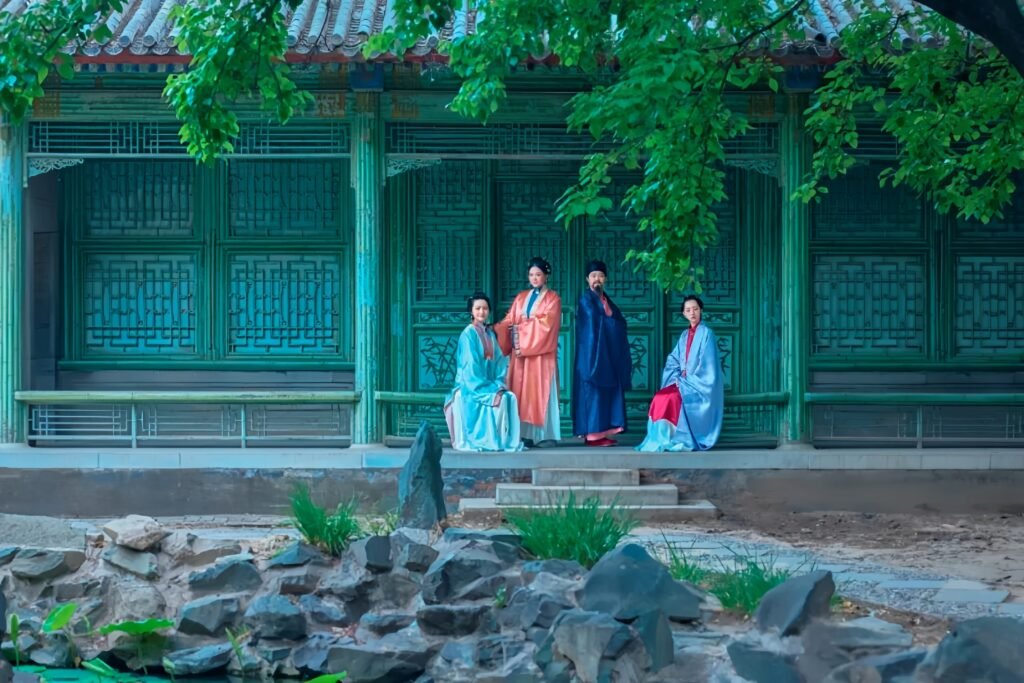

Responses